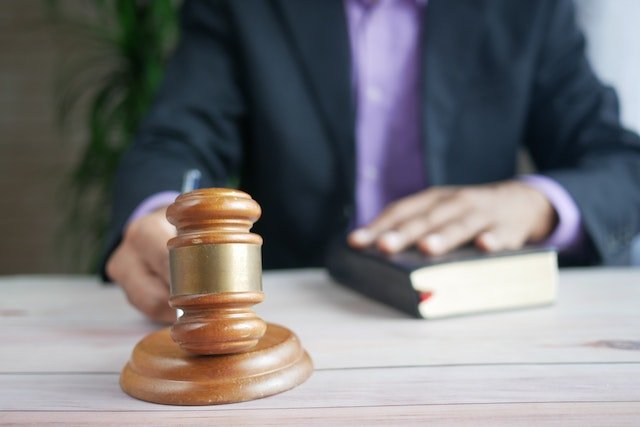The e-Committee of the Supreme Court has released draft ‘Rules on Live-Streaming and Recording of Court Proceedings’ (“Draft Rules”) on 28th May 2021. The e-Committee has invited inputs, feedback and suggestions on these Rules that can be submitted till 30th June 2021.
The aim of the Draft Rules is ‘to imbue greater transparency, inclusivity and foster access to justice” and thereforeit has been felt that “it is expedient to set up infrastructure and the framework to enable live-streaming and recording of Proceedings”. Rules have been framed with due consideration to the personal security of parties thereby providing the presiding judge with discretionary power to discontinue the live streaming. Though the ‘deciding authority’ to allow the live streaming of the proceedings/portion has been vested to the Bench, it needs to be conscious of the principle of an open and transparent judicial process.
Certain other safeguards have also been put in place –
- Presiding judge on the Bench will be provided with a remote control to pause or stop live streaming at any time.
- An IT Committee shall be constituted by the Chief Justice of the High Court to deal with matters concerning information and communication technology.
- A dedicated control room (DCR) shall be set up in every court complex comprising of an officer of the court, technical and video-recording experts. The DCR will be responsible for monitoring and tracking proceedings as they are live streamed, recorded, and transcribed.
- Technical expert(s) shall also be appointed/deputed in each of the Court Premises who will function under the overall supervision of the DCR.
- Court Master/Reader shall duly inform parties before commencement of the proceedings that the proceedings are being live-streamed.
- Parties can raise objection against the live streaming of the proceedings. However, the decision in this regard shall be taken by the Bench which shall be final and non-justiciable.
- Recordings will be made accessible to differently abled persons & Transcripts may be translated into other scheduled languages.
Other general precautions include –
- Personal information like home address, identity card number, bank account information etc. will be muted or deleted during the live streaming. However, the proceedings will be saved in the Archival Data.
- Advocates/litigants can request the bench to edit the sensitive information.
Owing to their sensitivity, certain matters have been excluded from live streaming –
- Matrimonial matters
- Sexual offences cases (consisting of proceedings under Section 376, IPC)
- Gender based cases of violence against women
- Matters involving POSCO Act 2012 & Juvenile Justice Act, 2015.
- Recording of cross examination and evidence
- Privileged communications between the parties and their advocate
- Cases that may provoke enmity amongst communities leading to violation of law.
- Matters that will be antithetical to administration of justice.
- Rule 5.3 restricts, live streaming in certain cases to final arguments.
Principle of open justice
The Draft Rules advances the principle of open justice. This principle was aptly iterated by Lord Chief Hewart when he stated –
“Justice should not only be done but should manifestly and undoubtedly be seen to be done”.
Open justice is commonly interpreted as the core principle of common law. The principle ensures that the judiciary functions fairly without misuse of power. However, the concept of open justice entails various elements and is best understood not as a single idea but as a set of principles that mediate between courts and the public. The principle of open court implies that the court proceedings including the evidence and documents disclosed during the process should be open to public scrutiny. However, it raises the question, how much scrutiny is necessary for the citizen to know about the judicial proceedings?
In Swapnil Tripathi v. Supreme Court of India, the principle of open justice was duly emphasized. The proceedings of cases that are of national and constitutional importance were allowed to be broadcasted to the public. The Court held that the right of access to justice under Article 21 gave the citizens the right to view live broadcasts of the proceedings of the Court. It recognized the benefits of live streaming and the interest of large segments of society that are left out due to poverty, illiteracy, and lack of awareness. It highlighted that the ‘principle of an open court is a significant procedural dimension of the broader concept of open justice’. Live streaming is an extension of the principle of open courts as it will infuse transparency by allowing access to the proceedings to maximum people.
However, this right is not absolute and the Court provided a set of Guidelines to be referred. The presiding judge shall have the discretionary power to disallow live streaming for specific cases if it is felt that publicity would threaten the interests of justice. The live proceedings shall be carried with a delay of two minutes (opposed to 10 minutes as provided by the Draft Rules), portions of proceedings that are not broadcasted online can be saved separately as ‘confidential records’ on the direction of presiding judge.
Followed by this, Gujarat High Court became the first High Court to start live streaming by creating its YouTube channel in 2020, Karnataka HC in 2021 and recently Madhya Pradesh High Court decided to provide weblinks to the live proceedings on its website.
Conclusion
Considering the poor infrastructure in which the courts in our country are, proper implementation might prove a challenge. Further, switching between what is allowed and what is not allowed to be streamed might experience some glitches. For instance, instructions to the administrative staff during the Proceedings shall not be live-streamed as per the Draft Rules. Anyone who has witnessed court proceedings is aware that the instruction to administrative staff is recurring in a court proceeding and removing them might be a hassle. However, release of Draft Rules is a laudable step by the Supreme Court. The efficacy when it is implemented is yet to be seen.

